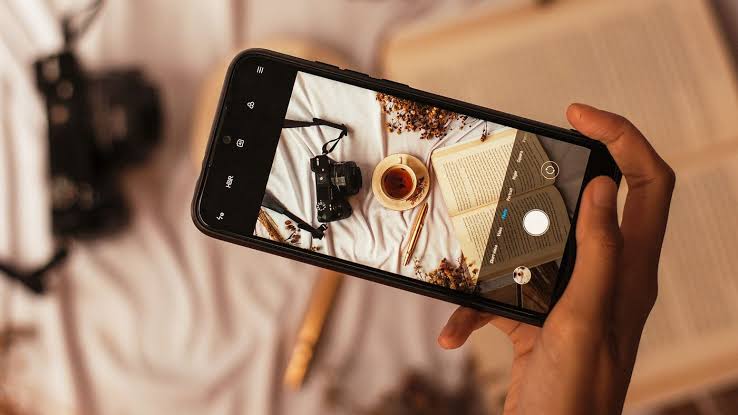The importance of smartphone camera advances goes beyond technological achievement; it reflects a profound cultural shift in how people create, communicate, and interact with the world. By merging accessibility, AI-driven enhancements, and professional-grade features, smartphones have turned photography into a universal language.
Over the past decade, smartphones have revolutionized photography, transforming the way people capture, share, and experience images. As of 2025, smartphone cameras are no longer just convenient alternatives to traditional cameras—they are powerful creative tools with professional-level features. The continuous innovation in mobile photography has not only reshaped industries such as media, marketing, and social networking but also influenced culture, communication, and even technology itself. Understanding the importance of smartphone camera advances reveals how photography has become central to modern life.
The evolution of smartphone photography
When the first smartphones integrated cameras, their capabilities were basic, often limited to low-resolution images suitable only for casual snapshots. Today, technological advances have led to multi-lens systems, large sensors, computational photography, and advanced image processing powered by artificial intelligence. Modern smartphones now rival or even surpass entry-level DSLR and mirrorless cameras in certain conditions.
Features such as 8K video recording, periscope zoom lenses, and real-time HDR have become standard in flagship devices. Computational photography, which uses algorithms to enhance details, improve low-light shots, and balance exposure, has become a defining aspect of mobile cameras. This evolution reflects how smartphones have democratized photography, giving everyone access to powerful creative tools.
Accessibility and democratization of creativity
One of the greatest impacts of smartphone camera innovation is accessibility. High-quality photography was once limited to those who could afford professional equipment. Today, anyone with a smartphone has the ability to capture magazine-worthy images, document everyday life, or even build a career in content creation.
Social media platforms such as Instagram, TikTok, and YouTube thrive on visual content, with smartphone cameras serving as the backbone of this ecosystem. This democratization has given rise to new professions—content creators, influencers, and digital storytellers—who rely primarily on smartphone photography and videography to reach global audiences.
Impact on communication and social interaction
Photography is no longer just about preserving memories; it is a form of communication. People increasingly use images, short videos, and live content to express emotions, tell stories, and connect with others. The rise of visual-first platforms reflects this shift, where images often carry more weight than words.
Advances in smartphone cameras have made spontaneous, high-quality content creation seamless. From video calls with cinematic clarity to real-time photo sharing, these innovations have deepened human interaction. Visual communication is now universal, crossing language barriers and fostering more personal connections in both personal and professional spaces.
Transforming industries and professions
The influence of smartphone cameras extends beyond personal use into professional industries. Journalism has been transformed, with mobile devices enabling real-time photo and video reporting from anywhere in the world. In marketing, smartphone photography powers product showcases, advertisements, and brand storytelling.
E-commerce relies heavily on sharp, detailed product images to attract buyers, while real estate and travel industries use smartphone videography to create immersive virtual tours. Even healthcare and education benefit, with smartphone imaging aiding in telemedicine and remote learning demonstrations. The versatility of smartphone cameras has made them indispensable tools across multiple sectors.
AI and computational photography
Artificial intelligence has become a cornerstone of modern smartphone photography. AI-driven features such as scene recognition, portrait enhancement, noise reduction, and automated editing have elevated the quality of mobile photography to professional standards.
For instance, AI can detect whether a subject is food, landscape, or a person and adjust exposure, color balance, and sharpness accordingly. Night mode photography, powered by computational algorithms, allows clear, vibrant images even in low-light conditions. Similarly, AI-driven editing tools can automatically retouch portraits, stabilize shaky videos, or even suggest creative framing.
The role of video in smartphone photography
As video content consumption grows, smartphone cameras are evolving into advanced videography tools. Features like 8K recording, cinematic modes with shallow depth of field, and professional-grade stabilization enable creators to produce film-like videos with minimal equipment.
Live streaming, short-form video content, and virtual reality experiences are now powered largely by smartphones. This shift has lowered entry barriers for aspiring filmmakers, journalists, and educators, giving them access to tools that were once prohibitively expensive.
Cultural and artistic impact
Smartphone photography has also shaped cultural trends and artistic expression. Movements such as mobile street photography and smartphone filmmaking have gained recognition in galleries and festivals. The ability to instantly capture and share perspectives from different parts of the world has expanded the global artistic conversation.
Moreover, the integration of AR (augmented reality) and VR (virtual reality) with smartphone cameras has opened new frontiers for creative storytelling. Artists, educators, and designers are using these technologies to blend digital and physical realities, creating immersive experiences that redefine visual art.
Challenges and limitations
Despite their advances, smartphone cameras are not without limitations. Physical constraints such as small sensors and limited optical zoom mean that professional cameras still outperform smartphones in specific scenarios like wildlife or sports photography. Battery drain, storage space, and dependency on computational processing are also challenges.
Additionally, the abundance of mobile photography raises questions about authenticity and image manipulation. With AI-driven editing becoming more advanced, distinguishing between real and altered content is increasingly difficult, raising ethical concerns in journalism and media.
The future of smartphone photography
Looking ahead, the smartphone camera is expected to become even more powerful and intelligent. Innovations such as foldable devices with integrated advanced optics, under-display cameras, and further integration of AI-driven editing will redefine mobile photography. The development of quantum dot sensors and enhanced periscope zoom lenses promises DSLR-level performance in handheld devices.
As wearable devices and AR glasses gain popularity, smartphone cameras may also become hubs for capturing and projecting immersive, interactive visuals. This evolution suggests that the role of smartphone photography will continue expanding, influencing not only art and communication but also emerging fields like the metaverse.
